UC Gardening Blogs
UC Davis Arboretum Plant Sale on March 10; Why Not Think Gaillardia?
If you've been thinking about blanketing your garden with blanketflower (Gaillardia), you're in...
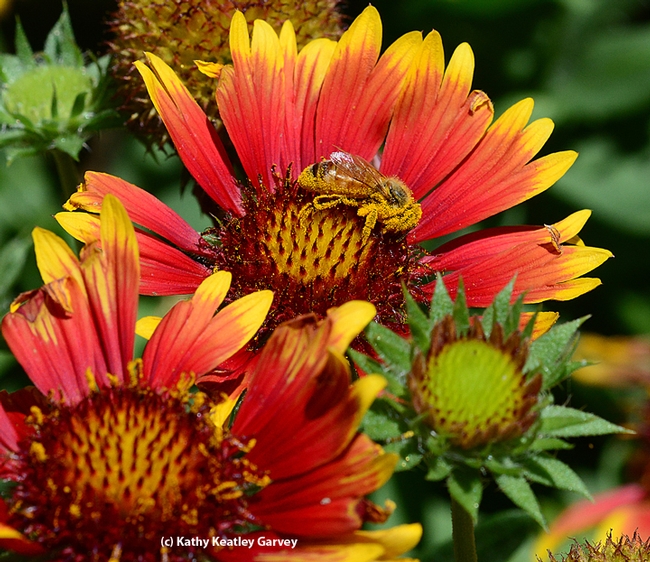
A pollen-covered honey bee forages on a Gallardia. (Photo by Kathy Keatley Garvey)
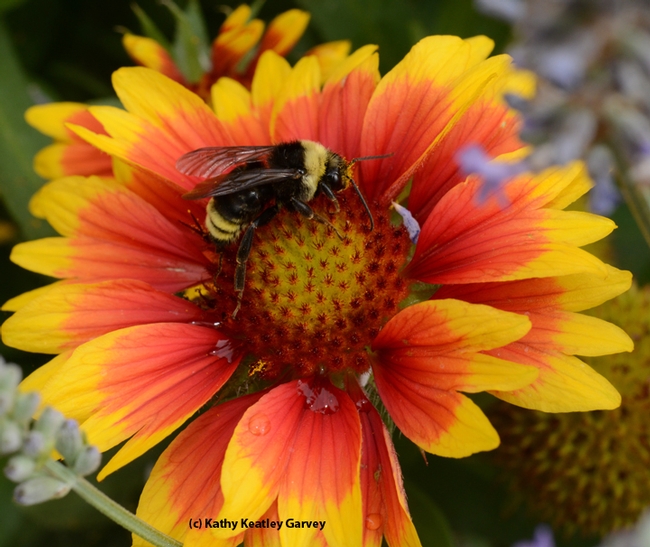
A black-tailed bumble bee, Bombus californicus, forages on a Gaillardia. (Photo by Kathy Keatley Garvey)
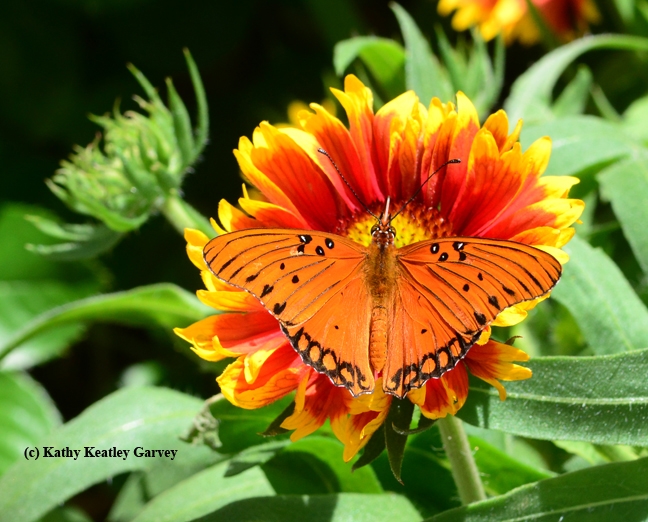
A Gulf Fritillary butterfly, Agraulis vanillae, flutters on a Gaillardia. (Photo by Kathy Keatley Garvey)
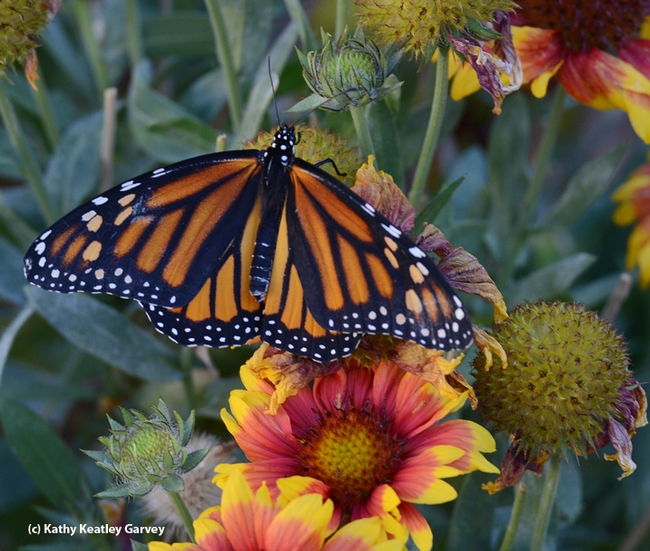
A monarch butterfly, Danaus plexippus, spreads its wings on a Gaillardia. (Photo by Kathy Keatley Garvey)
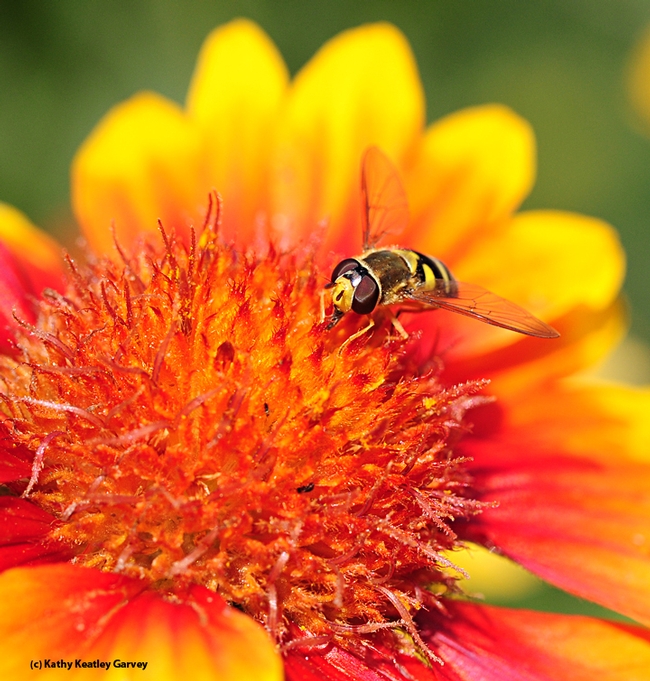
A syrphid fly, also called a hover fly or flower fly, stakes out a Gaillardia. (Photo by Kathy Keatley Garvey)
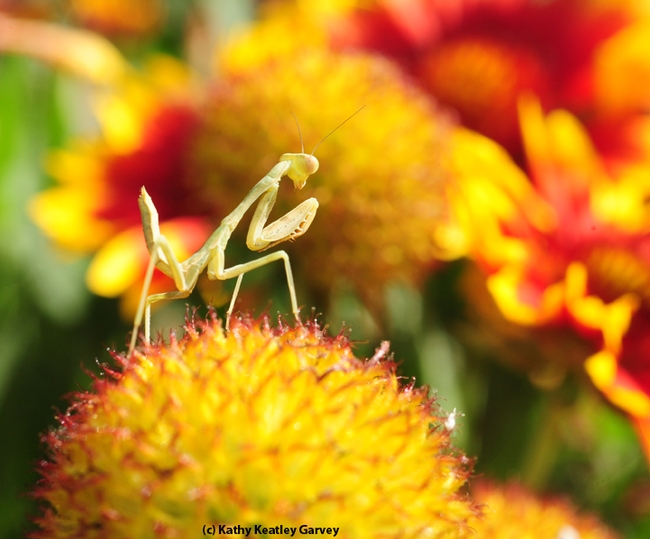
Pollinators aren't the only insects that like Gaillardia. Here a praying mantis lies in wait. (Photo by Kathy Keatley Garvey)
Daffodil Cinquain
Greetings
Cheerful faces
Welcome blossoms of spring
Bright spots of orange, white, and yellow
Jonquils
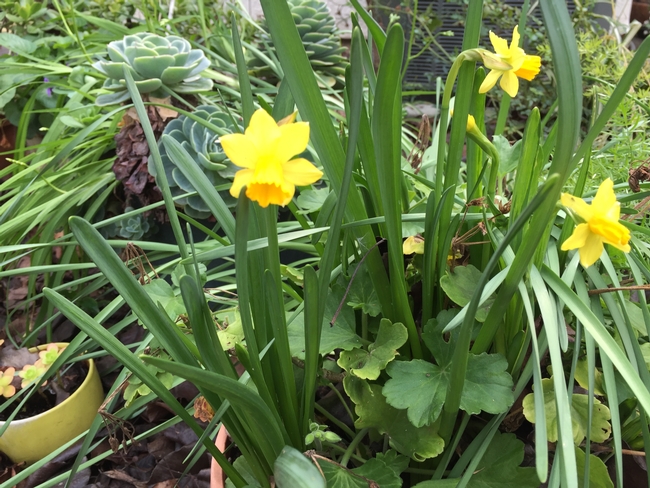
photos by Martha White
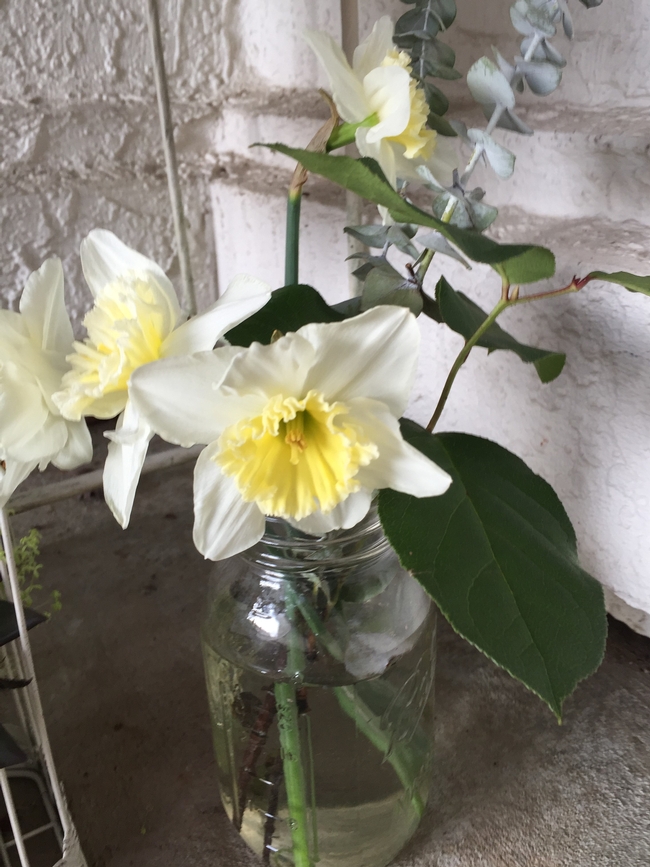
IMG 4911
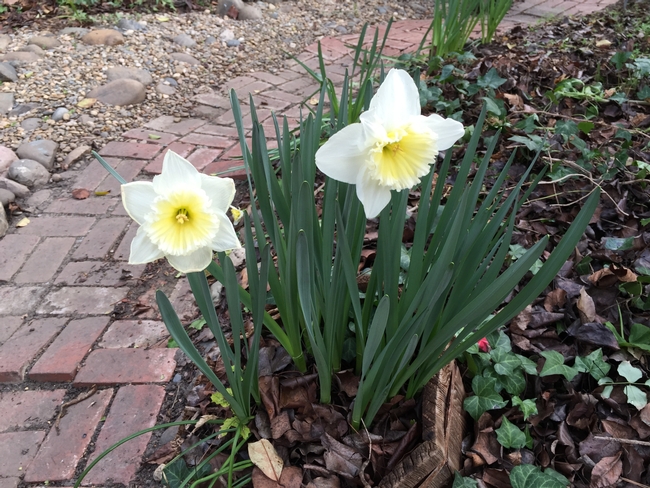
IMG 4915
Unforeseen Trophic Interactions in Ag Systems: What-Eats-What in the Food Chain
Trophic interactions--or what-eats-what in the food chain or food web of a given ecosystem--will...
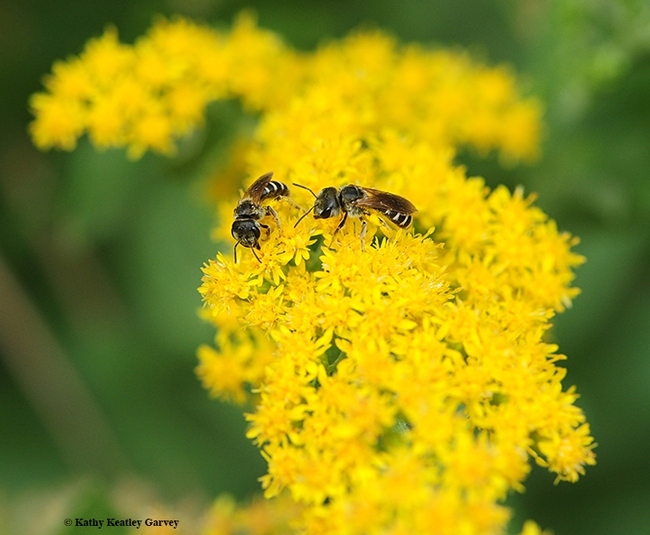
Female sweat bees, Halictus ligatus, on goldenrod at the UC Davis Arboretum and Public Garden. (Photo by Kathy Keatley Garvey)
Don't Tie Up Your Tree!
I bought this house in May last year. I was excited to see that there were 4 growing fruit trees in the backyard. At that time I knew I would be doing some future tree maintenance.
There were many issues to deal with before I got a chance to really look at my fruit trees. When I finally got settled in and had time to look at my trees, I noticed that there had been wires between the branches. The wires had been used to support the growing branches. The wires had since been cut off between the branches. But the wires around the tree branches were still present and the tree branches had grown around the wires. Look at the picture below and you can see how the tree grew around the wires.
If you tightly tie the tree another object you create at least three issues that result in unhealthy trees: 1) If you are supporting the trunk tightly you don't give the tree the ability to thicken (the tree responds to stress moving back and forth) 2) the tight bonds cuts into the bark giving potential pathogens to enter the tree and 3) if let on the tree long enough the tree will attempt to grow around the wires or rope.
Tying a tree tightly around its trunk can result in its premature death. The living portion of tree lies just beneath the bark. Two layers just under the bark: phloem and xylem transport water, minerals and food up and down the tree. As the tree grows out this living layer meets the wire, rope or string and grows around it cutting the xylem and phloem entirely resulting in premature death. Trees are resilient if the xylem and phloem are not completely cut around the tree will try to heal itself. The best thing to do is remove all dead and decaying bark and wait. Consult an arborist if the tree does not respond.
If you observe a tree with wire or other types of support that are tightly wrapped around the trunk or branches immediately cut them off. If the tree has already started to grow around the wire or strap remove as much of the support as possible, clean up the wound and let the tree heal itself.
If the tree still needs support, support it with arbor tie or a similar soft straps with a ½” to 1” leeway. Don't be cheap and grab the nearest thing handy to strap the tree with, wires and rope are not approved for support. Remember to check the tree in three months to see if the supports need adjusting.
Damage to the tree trunk can also be caused by using a string trimmer near the tree. The string trimmer can cut through the bark and cut the living cambium layer. Never, never use a string trimmer around the tree base.
About ten years ago I removed an old bicycle chain that had been left on a tree I used a bolt cutter to remove as much as the chain that I could. Fortunately the chain had not encircled the entire tree and the tree is still alive! It's located at the front entrance to the Buchanan YMCA in San Francisco.
Enjoy your trees. Take a pruning class to learn how to take proper care of your trees. And you will be rewarded for the fruits of your labor.
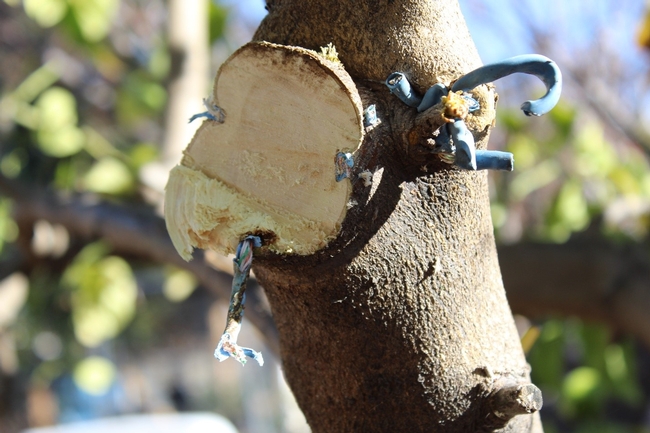
photo by Brenda Altman
Tom Seeley: 'Bees Are Superb Beekeepers'
"Honey bees are superb beekeepers; they know what they're doing." So said bee scientist and author...
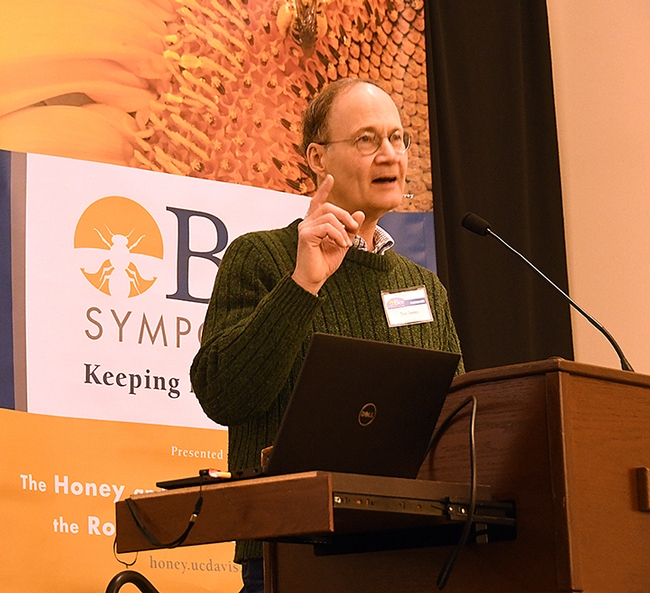
"Honey bees are superb beekeepers; they know what they're doing," keynote speaker Tom Seeley tells the fourth annual UC Davis Bee Symposium. (Photo by Kathy Keatley Garvey)
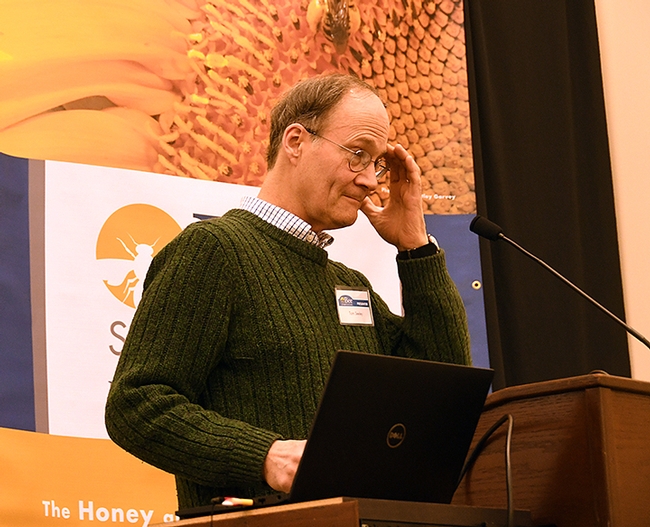
"EVERYTHING that colonies do when they are living on their own (not being managed by beekeepers) is done to favor their survival and their reproduction, and thus their success is contribution to the next generation of colonies," Cornell bee scientist Tom Seeley pointed out. (Photo by Kathy Keatley Garvey)
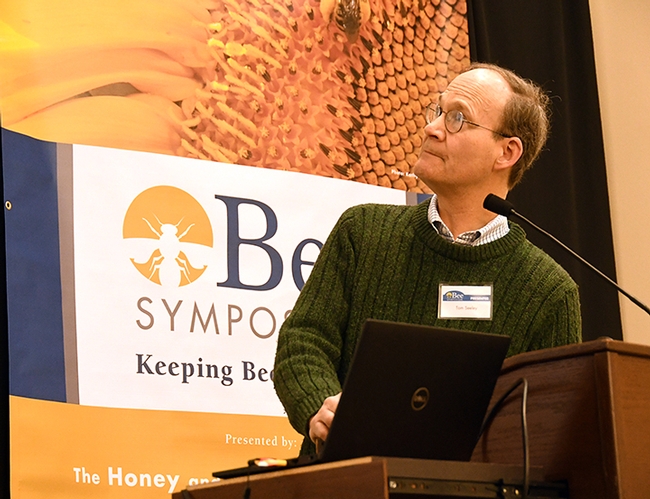
"Darwinian beekeeping is allowing the bees to use their own beekeeping skills fully," keynote speaker Tom Seeley says. (Photo by Kathy Keatley Garvey)

Professor Neal Williams (left) of the UC Davis Department of Entomology and Nematology, shares a laugh with keynote speaker Tom Seeley of Cornell. (Photo by Kathy Keatley Garvey)



